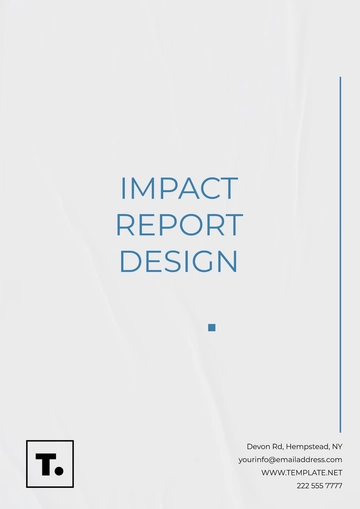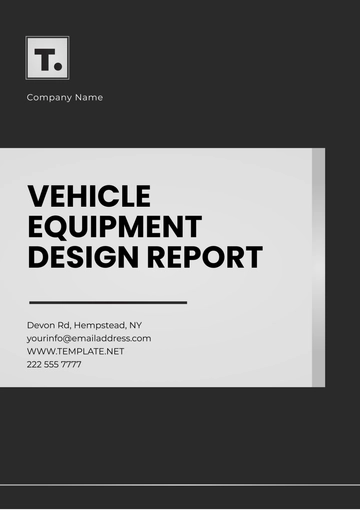Free Power Plant Site Visit Report Design

Date of Visit: December 15, 2054
Visited by: Sarah Lee (Safety Officer), Mark Tan (Operations Manager)
Report Prepared by: [Your Name]
1. Introduction
This report summarizes the observations made during the site visit to Green Valley Power Plant on December 15, 2054. The objective of the visit was to evaluate the plant's operational status, safety practices, maintenance routines, and environmental compliance.
2. Objectives of the Visit
To assess the current operational performance of the power plant.
To evaluate the effectiveness of safety protocols and training.
To inspect maintenance practices and overall plant infrastructure.
To review environmental compliance and sustainability measures.
3. Observations
3.1 General Facility Condition
The Green Valley Power Plant is a [150 MW] combined-cycle power station that provides electricity to the regional grid. The site appeared to be in good overall condition, with well-maintained structures and clear signage.
The turbine hall, boiler room, and cooling towers were clean and organized. No significant wear or corrosion was noted on critical equipment.
The control room, located in a central building, was well-equipped with modern monitoring systems, and operators were present during the visit.
3.2 Operational Practices
The plant was operating at 95% capacity during the visit, producing 142.5 MW of electricity. The load distribution was stable, with minimal fluctuations.
Control room operators were well-versed in their duties and adhered to operational protocols. Plant efficiency was rated at 92%, with low levels of heat rate and excellent fuel consumption ratios.
A plant-wide software system continuously monitors operations, which helps prevent errors and optimize performance.
3.3 Safety Standards
Safety protocols were followed rigorously. All personnel were wearing the required personal protective equipment (PPE), including helmets, gloves, and safety boots.
Safety signage was clearly visible in all high-risk areas, such as near electrical panels, machinery, and confined spaces.
A scheduled safety drill was conducted during the visit, simulating a fire emergency in the turbine hall. The evacuation was swift and efficient, with all employees following the designated escape routes.
3.4 Maintenance Practices
The plant follows a strict preventive maintenance program. Daily inspections of turbines and auxiliary systems are conducted, and a comprehensive monthly review of all major equipment is performed.
The maintenance team, led by Chief Engineer Robert, emphasized the importance of predictive maintenance. Vibration analysis and infrared thermography are used to detect potential issues in advance.
The spare parts inventory was well-stocked, with quick access to critical components such as turbine blades, seals, and filters.
3.5 Environmental Impact
The plant has consistently met environmental regulations for air and water quality. Emissions are within the permissible limits, as verified by the continuous emission monitoring system (CEMS) and regular third-party audits.
Water used in the cooling process is treated and recycled. The plant has a zero-discharge policy, ensuring no waste is released into the local environment.
The plant is also exploring options for reducing CO2 emissions by investigating the integration of solar panels on its rooftops, which could provide a supplementary energy source.
4. Key Findings and Recommendations
4.1 Equipment Optimization
While the plant is operating efficiently, there is room to improve turbine efficiency by upgrading older models. The installation of newer gas turbines could reduce fuel consumption and enhance overall output.
The adoption of advanced data analytics tools could further optimize performance by predicting potential failure points and improving maintenance scheduling.
4.2 Energy Efficiency
The plant could benefit from a more detailed energy audit. Identifying areas with higher energy losses, such as in the transmission or auxiliary systems, could lead to cost savings and increased efficiency.
4.3 Safety Improvements
Although safety measures are up to standard, the introduction of periodic hands-on emergency drills and scenario-based training could strengthen the plant's readiness for extreme events.
4.4 Sustainability Initiatives
Green Valley Power Plant should explore the possibility of integrating a small-scale wind turbine or biomass system to complement its energy output and further reduce its carbon footprint.
Additionally, the use of waste heat for district heating or industrial applications could be investigated to improve resource utilization and minimize waste.
5. Conclusion
The Green Valley Power Plant demonstrates strong operational performance, with a dedicated team managing its operations effectively. The safety protocols and environmental practices are commendable, ensuring a safe working environment and minimal impact on the local ecosystem. However, opportunities for optimization and future growth remain, particularly in terms of equipment upgrades, energy efficiency, and sustainability initiatives.
- 100% Customizable, free editor
- Access 1 Million+ Templates, photo’s & graphics
- Download or share as a template
- Click and replace photos, graphics, text, backgrounds
- Resize, crop, AI write & more
- Access advanced editor
The Power Plant Site Visit Report Design Template, offered by Template.net, is a versatile and professional solution for documenting site visits. This customizable template is fully editable in our AI Editor Tool, allowing you to make quick adjustments to suit your needs. Downloadable and printable, it ensures you can easily share and archive your reports. Perfect for industry professionals looking for a reliable and efficient way to capture key details during site visits. Get started today with this user-friendly template and streamline your reporting process.
You may also like
- Sales Report
- Daily Report
- Project Report
- Business Report
- Weekly Report
- Incident Report
- Annual Report
- Report Layout
- Report Design
- Progress Report
- Marketing Report
- Company Report
- Monthly Report
- Audit Report
- Status Report
- School Report
- Reports Hr
- Management Report
- Project Status Report
- Handover Report
- Health And Safety Report
- Restaurant Report
- Construction Report
- Research Report
- Evaluation Report
- Investigation Report
- Employee Report
- Advertising Report
- Weekly Status Report
- Project Management Report
- Finance Report
- Service Report
- Technical Report
- Meeting Report
- Quarterly Report
- Inspection Report
- Medical Report
- Test Report
- Summary Report
- Inventory Report
- Valuation Report
- Operations Report
- Payroll Report
- Training Report
- Job Report
- Case Report
- Performance Report
- Board Report
- Internal Audit Report
- Student Report
- Monthly Management Report
- Small Business Report
- Accident Report
- Call Center Report
- Activity Report
- IT and Software Report
- Internship Report
- Visit Report
- Product Report
- Book Report
- Property Report
- Recruitment Report
- University Report
- Event Report
- SEO Report
- Conference Report
- Narrative Report
- Nursing Home Report
- Preschool Report
- Call Report
- Customer Report
- Employee Incident Report
- Accomplishment Report
- Social Media Report
- Work From Home Report
- Security Report
- Damage Report
- Quality Report
- Internal Report
- Nurse Report
- Real Estate Report
- Hotel Report
- Equipment Report
- Credit Report
- Field Report
- Non Profit Report
- Maintenance Report
- News Report
- Survey Report
- Executive Report
- Law Firm Report
- Advertising Agency Report
- Interior Design Report
- Travel Agency Report
- Stock Report
- Salon Report
- Bug Report
- Workplace Report
- Action Report
- Investor Report
- Cleaning Services Report
- Consulting Report
- Freelancer Report
- Site Visit Report
- Trip Report
- Classroom Observation Report
- Vehicle Report
- Final Report
- Software Report





























